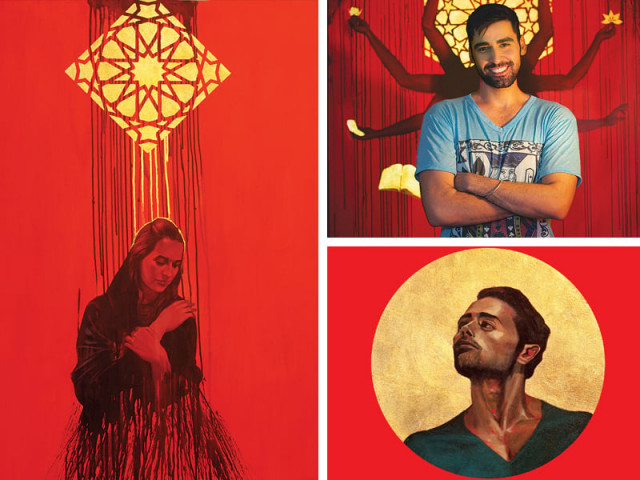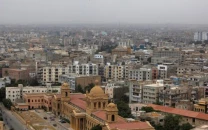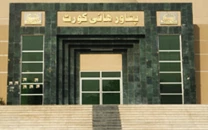Komail Aijazuddin: Connecting art with faith
Artist’s work is being exhibited at Khaas Art Gallery this month.

The geometric patterns in Aijazuddin’s work can be found in shrines and mosques around Pakistan. PHOTOS: PUBLICITY
Several artists use the canvas to express their inner most desires or as a means of letting go of their deep-rooted inhibitions. From political issues to social ones, they tend to convert the external stimuli and channel their emotions onto the blank canvas. However, in Komail Aijazuddin’s case, instead of taking stimuli from his current surroundings, he takes inspiration from his faith and divinity.
“My journey is a personal search of what faith means to me,” begins Aijazuddin. “From an early age, I have been in search of faith; when I was still young, no one spoke about divinity and the afterlife.” He admits it bothered him that despite our nation being defined by religion, we refuse to talk about it.

Aijazuddin, a graduate of Studio Art and Art History from New York University, struggles with a myriad of issues such as divinity, theocracy, morality, the frailty of human existence, the concept of judgment and having a personal connection with God.
The artist’s Red and Gold collection exudes a warm tint. “I began using it years ago; as per medieval instructions, I give the gold leaf in my work a warmer capsule,” he explains. It takes patience as well as precision and planning when working with these two tones, and Aijazuddin feels this is the closest he has been to meditation. “The more I explored its limits, the further they were.”
“I thought if I explored the earliest parts of my own religion, I would know more about the bits of what I am, what we are and what we are living through now,” he continues, adding that the longer he has lived in Pakistan, these bits and stories have now actually become less necessary to him in a visual context.
There are recurring renditions of Islamic patterns in Aijazuddin’s work — the geometric patterns can be found in shrines and mosques in Pakistan such as Wazir Khan’s mosque in Lahore. The most intriguing aspect of these patterns is that they are mathematically infinite; one line tracing, re-tracing and overlapping shapes create the lattice. These patterns portray the concept of infinity which, in turn, symbolise the infinite nature of God.
“My work is not about searching Islam, but about defining divinity,” he adds. “In essence, the purest meaning of divinity is that we are not alone,” he says, referring to the presence of God even in the loneliest moments in our lives.
The artist has also created pieces such as Durga Hijaban in order to depict what powerful women would look like in greater South Asia. “My hope is to show people an amalgam of various iconographies from different divinatory traditions to create something we haven’t seen before,” Aijazuddin concludes. “I had to create my own language as it didn’t exist in the past — it helps me understand concepts.”
Aijazuddin’s work is being exhibited at Khaas Art Gallery this month.
Correction: An earlier version of this story incorrectly stated that the artist is still a student at the New York University.
Published in The Express Tribune, September 27th, 2013.
Like Life & Style on Facebook, follow @ETLifeandStyle on Twitter for the latest in fashion, gossip and entertainment.


















COMMENTS
Comments are moderated and generally will be posted if they are on-topic and not abusive.
For more information, please see our Comments FAQ